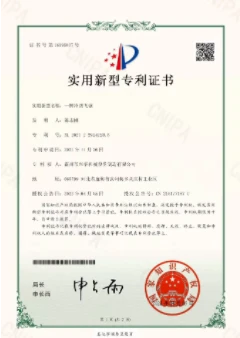hydraulic metal shear machine
Understanding Hydraulic Metal Shear Machines An Overview
Hydraulic metal shear machines have become indispensable tools in modern fabrication and manufacturing processes. These machines are designed to cut various types of metals with precision and efficiency, making them an integral part of workshops, factories, and construction sites. This article explores the working principles, benefits, applications, and maintenance of hydraulic metal shear machines.
Working Principle
Hydraulic metal shears utilize hydraulic pressure to generate the force necessary for cutting through metal sheets and rods. They operate on the principle of Pascal's law, which states that fluid pressure applied to a confined fluid is transmitted undiminished in all directions. When the operator engages the machine, hydraulic fluid is pumped into a cylinder, driving a piston that moves a cutting blade. This blade typically moves in a linear motion to shear the metal workpiece placed underneath.
These machines can vary in size and capacity. Small bench-top models are suitable for light materials, while larger industrial shears are capable of cutting through thick steel plates. The cutting blades are often made from high-grade materials to ensure durability and longevity, providing high-quality cuts without excessive wear.
Benefits of Hydraulic Metal Shear Machines
One of the foremost advantages of hydraulic shears is their ability to provide smooth and precise cuts, ensuring that edges are clean and ready for further processing or assembly. This is crucial for industries requiring strict tolerances in their fabrications.
Furthermore, hydraulic shear machines are known for their energy efficiency. The use of hydraulics to generate cutting force requires less energy than mechanical systems, which often rely on gears and belts that can contribute to energy loss. This not only reduces operating costs but also minimizes wear and tear on the machine, leading to lower maintenance requirements.
Another significant benefit is the safety features integrated into hydraulic shear machines. Modern designs include advanced safety mechanisms such as emergency stops, automatic blade retraction, and safety guards, which protect operators from accidents during operation. These features enhance workplace safety, which is a priority in any manufacturing environment.
hydraulic metal shear machine

Applications
Hydraulic metal shear machines find applications across various industries. In the construction sector, they are used for cutting steel sheets for structural components, while in automotive manufacturing, they can shear metal parts for vehicles. Sheet metal fabrication workshops rely on these machines for creating parts for HVAC systems, appliances, and electronic enclosures. Additionally, recycling facilities utilize hydraulic shears for processing scrap metal, making them a vital part of the recycling chain.
According to the specific needs, operators can adjust parameters such as cutting speed and blade pressure to accommodate different materials and thicknesses. This versatility makes hydraulic shears suitable for both small-scale projects and large-scale industrial operations.
Maintenance Tips
To ensure the longevity and performance of hydraulic metal shear machines, regular maintenance is crucial. Operators should routinely check and replace hydraulic fluid to prevent contamination and ensure smooth operation. Additionally, inspecting the cutting blades for wear and sharpness is essential; dull blades should be replaced to maintain cutting quality.
Furthermore, it’s important to keep the machine clean and free from debris. Regularly lubricating moving parts will also help reduce friction and wear, prolonging the lifespan of the machine. Operators should be trained in recognizing potential issues, such as leaks or unusual noises, which may indicate a need for professional service.
Conclusion
Hydraulic metal shear machines are vital tools in a variety of industries, offering precision, efficiency, and safety. Their ability to effectively shear metal makes them an essential asset in modern manufacturing and fabrication processes. By understanding their functioning, benefits, applications, and maintenance, operators can maximize productivity and ensure the longevity of these indispensable machines.
-
High Frequency Straight Seam Welded Pipe Production Line-BzZhou Xinghua Machinery Equipment Manufacturing Co., LTD.|Precision Welding, High EfficiencyNewsJul.30,2025
-
High Frequency Straight Seam Welded Pipe Production Line|BzZhou Xinghua|Precision Welding&EfficiencyNewsJul.30,2025
-
High Frequency Straight Seam Welded Pipe Production Line - BzZhou Xinghua|Precision Engineering&EfficiencyNewsJul.30,2025
-
High-Frequency Straight Seam Welded Pipe Production Line-BzZhou Xinghua Machinery Equipment Manufacturing Co., LTD.NewsJul.30,2025
-
High-Frequency Straight Seam Welded Pipe Production Line-BzZhou Xinghua Machinery Equipment Manufacturing Co., LTD.|Precision Manufacturing, High EfficiencyNewsJul.30,2025
-
High Frequency Straight Seam Welded Pipe Production Line-BzZhou Xinghua Machinery Equipment Manufacturing Co., LTD.|Precision Steel Pipe Manufacturing&Industrial EfficiencyNewsJul.29,2025


